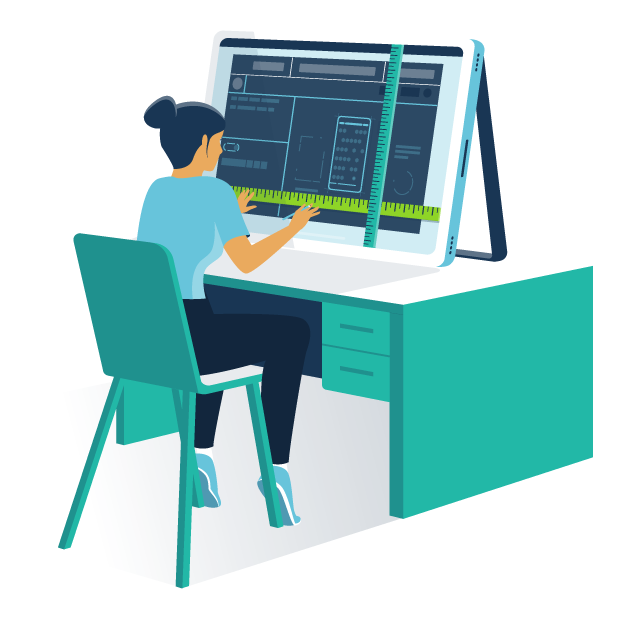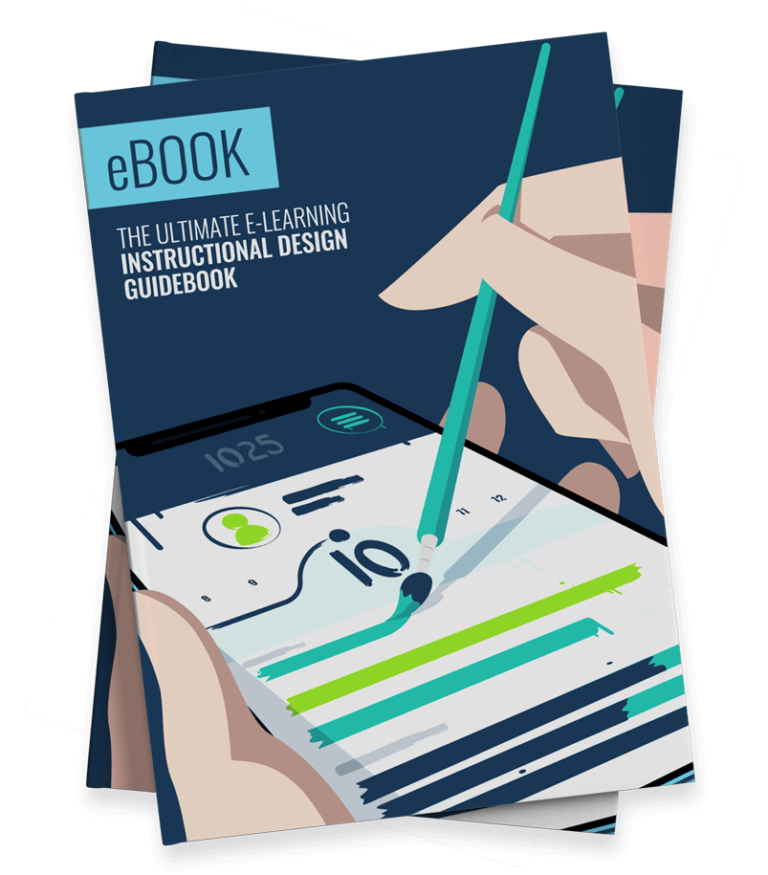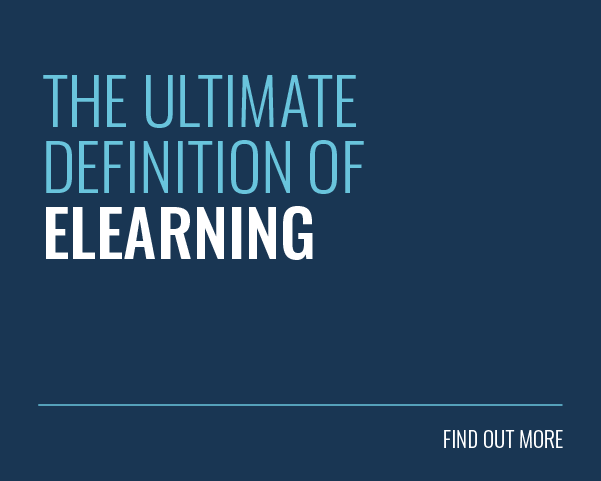In today’s digital age, online learning has emerged as a powerful tool for learning and development. In fact, the flexibility, accessibility and interactive nature of online learning has revolutionised education and training across various industries. However, eLearning design and development process takes time and care.
But how much time exactly? This question often arises in the mind of individuals who are embarking on an eLearning creation journey and try to estimate how long it will take for them to craft their training programmes.
Unfortunately, there is no easy answer to this question. With this in mind, we’ll delve into the eLearning production process and the factors that influence its timeline. In addition, we’ll explore some strategies that help to optimise your development time.
Without further ado, let’s get started!
The Online Learning Development Process
Online learning, or eLearning, leverages the power of the internet and technology to create interactive, engaging and self-paced learning experiences.
The market has boomed recently, and much of this growth can be attributed to the Covid-19 pandemic. Now, the eLearning market has reached a whopping $315 billion valuation.
Online learning enables you to deliver your training programme through digital means rather than in face-to-face or instructor-led classroom settings. As such, this type of approach is typically enabled by learning technology.

Like traditional training, online learning focuses on facilitating skills development, knowledge retention and behaviour change. It does this by combining instructional design principles, multimedia elements, interactivity and user-friendly learning platforms.
To do so, L&D professionals and instructional designers run through a set process to ensure they deliver high-quality, relevant content that engages their target audience.
Let’s start by exploring what influences the eLearning development time. This will help us to understand what’s involved and how long each step might take.
What Influences eLearning Development Time?
Creating training takes care and dedication. Naturally, there are also various factors that will influence your eLearning production time.
Let’s take a look at some of them!
1. Content Complexity
The complexity of your content and its subject matter plays a significant role in how much time you will need to create your eLearning module.
For example, courses that cover specialised topics, like advanced scientific concepts or technical skills, typically require extensive research. This, in turn, takes time and resources.
Similarly, your instructional designers may require more time to complete the development process. After all, effective instruction becomes more challenging when you’re dealing with complex topics.
With this in mind, it’s essential that you account for the complexity of your content when estimating your development time.
2. Multimedia Requirements
Interactive elements and multimedia content help you to add depth to your training materials. This can increase engagement and make your courses more fun and interactive.
However, these interactive elements can also increase your development time. After all, incorporating approaches like scenarios, simulations, gamification, or virtual reality requires careful planning, design and programming.

Even incorporating simple multimedia components like videos, animations or graphics will increase your development time. After all, these additions need to be scripted, storyboarded, recorded and edited.
In fact, Your eLearning World suggests you need to reserve 25 hours for graphics if you have at least one visual element on every screen on a 1-hour training course.
The complexity and quantity of your multimedia elements can directly impact your development time. Don’t be afraid to be selective when necessary.
3. Collaboration and Resources
The size and expertise of your eLearning development team can influence your development time significantly.
To create high-quality content, you might need to collaborate with instructional designers, subject matter experts (SMEs), graphic designers or programmers. This, of course, means that your eLearning development time depends heavily on the availability and coordination of these team members.
In addition, their familiarity with the online learning development process can impact your timeline. As such, efficient allocation of resources and clear communication across teams will be essential for the timely completion of your project.
4. Technology and Tools
There are a wide variety of tools available that help you to create an online learning initiative. These tools can empower you to streamline the development process.
For example, advanced LMSs and authoring tools typically come with templates, pre-designed assets, game mechanics and other interactive elements. As such, these tools help you to automate or enhance your content creation process.
In addition, these tools enable you to easily update, prototype or clone content to reduce development time for future projects.
However, not all eLearning tools are created equal. For example, Growth Engineering Authoring Tool, helps you to create high-impact gamified and game-based training content 10x faster than its competitors.
5. Project Management
Did you know that organisations that use proven project management practises waste 28x less money than organisations that do not? Project management is an essential part of efficient business operations, and your training initiatives are no exception.
In fact, efficient project management will play a vital role in optimising your eLearning development timeline. Proper project scoping, setting clear milestones and working towards realistic deadlines will help you to make smooth progress through the eLearning development process.
This includes, for instance, allocating tasks, defining roles and responsibilities, tracking progress regularly and resolving issues proactively to limit delays.
Project management and collaboration tools, like Asana or Trello, will help you to stay on top of the process and track your deadlines.
6. Previous Experience
Your previous experience as an eLearning creator can influence the time it takes you to develop an eLearning initiative. After all, your prior experience will enable you to leverage your existing knowledge in your current circumstances.
In fact, the Association for Talent Development research found out that limited resources, including time, talent and money, was the biggest barrier (67%) to faster production.

You’ll be able to work more efficiently due to your familiarity with the process, concepts, terminology and technology. You’ll also be well placed to deal with any obstacles or challenges that arise.
Similarly, previous experience helps you to identify and select appropriate learning resources, like multimedia elements, interactive tools and external materials. After all, you’ll have a better understanding of how these elements will help in achieving your learning objectives.
How Much Time Does Each Stage Take?
We’ve arrived at the big question. Unfortunately, we have no straightforward number to share. But don’t click away just yet!
It has been said that a 10,000-word script will equal one hour of online learning. However, this vague guidance is not particularly helpful for most of us.
As such, let’s explore what different resources say:
- Dan Institute guides that it can take anywhere between 25-500 hours to create an online course.
- IconLogic suggests that it will take 1-2 hours to produce 1 minute of eLearning playtime, depending on the tools you use.
- Leah Chag Learning shares their personal experience of the shortest and longest development time. A 15-minute course took 30 hours to create, whereas 6 hours of learning time took 800+ to develop.
- Bryan Chapman’s research gives estimates according to different levels of interactivity. Online learning with average levels of interactivity has a development ratio of 184:1. As such, 1 hour of eLearning takes 184 to develop. The table below highlights the development time for different levels for creating 1 hour of content:
| Level 1 – Basic | Level 2 – Interactive | Level 3 – Advanced | |
| Low | 49h | 127h | 217h |
| Average | 79h | 184h | 490h |
| High | 125h | 267h | 716h |
While there are differences in these numbers, research makes one thing clear: The time you will need to put an eLearning initiative together depends on your specific training needs.
Without previous experience on a very similar project, you cannot know for sure how long the process will take. As such, we advise you to not underestimate the length of this process.
We’d also recommend that you talk to your learning technology provider. They will have experience with this process and can give you invaluable guidance. This is especially important if you use an authoring tool to create your content.
Key Stages of the eLearning Production Process
To understand how long different parts of the process take, let’s explore the eLearning development process step by step.
The previously mentioned Chapman study also broke down the tasks and percentage of time required for each:
- Front End Analysis: 9%
- Instructional Design: 13%
- Storyboarding: 11%
- Graphic Production: 12%
- Video Production: 6%
- Audio Production: 6%
- Authoring/Programming: 18%
- QA Testing: 6%
- Project Management: 6%
- SME/Stakeholder Reviews: 6%
- Pilot Test: 4%
- Other: 1%
These alone give you guidance on how to allocate your resources. However, let’s go into more detail and explore some of the key stages of the process.
These examples focus on internal eLearning production rather than outsourcing via a third-party.
1. Needs Analysis
Before you start your development process, you need to understand your learners and their specific needs. As such, you need to start by analysing your audience. This will help you to set effective learning objectives and achieve desired outcomes.
To do this, you should start by conducting a training needs analysis (TNA). This helps you to determine the distance between your audience’s current knowledge and skills and where you need to end up.
Depending on your existing levels of research, you will likely have to collect some in-depth data. This can involve quantitative or qualitative data or a combination of both.
It can take anywhere from a few days to a few weeks to research your audience and collect and analyse the data. The complexity of your subject matter and the availability of relevant research materials are influencing factors here.
Similarly, quantitative data collection is typically quicker and easier to organise. After all, today’s technology makes the analysis process simpler than ever before. There are plenty of survey tools you can use to collect and examine this type of data.
On the other hand, qualitative methods, like interviews or observations, typically take longer to organise and evaluate.
2. Instructional Design

Once you understand the needs of your audience, you then need to define your course structure, content outline and the tools required to deliver instructional experiences to your learners.
At this stage, depending on your needs, you should create an outline for your training programme, curriculum or unit. This plan should include selecting appropriate instructional strategies and content delivery methods.
Similarly, you should design and outline your assessment needs and evaluation criteria. Identifying all your content needs is essential for you to accurately estimate your eLearning development time.
This step can take a few days to a week, depending on the length and complexity of your training initiative. In fact, if we are to follow Chapman’s outline, this is one of the most important processes, and will take 13% of your time.
3. Content Development
Once you have an outline in place, it’s time to start building your content.
You’ll either need to create content from scratch, repurpose old content, or outsource it from third-party providers. Your eLearning content will incorporate materials such as text, images, videos and interactive elements.
Your focus should be on creating relevant content that’s aligned to your learning objectives. Your content should also be engaging enough to encourage learners to continue their learning journey.
The time it takes for you to create content depends on the type and volume of materials. For example, creating multimedia content, like videos or animations, takes longer than preparing text-based training units.
Based on the previous estimations, we like to follow a rule of thumb that 1 hour of content requires 180 development hours. As such, you will most likely need multiple weeks to develop your content, especially for longer learning projects.
Once your experience, knowledge and proficiency grows, you can adjust your development time accordingly.
4. Editing Materials
Once you have your content, it’s time to review and refine it. You should focus on clarity, consistency and accuracy.
The duration of this step, of course, heavily depends on how much content you’ve created in the first place. Similarly, your review process will be quicker the more people you can involve.
Typically, this process will take a few days to complete. In fact, you can often review single units in a day or less.
5. Upload and Review Course Structure
The last stage involves publishing your online training initiative. To do so, you need to upload all your training materials onto your LMS or another learning platform.
If you are using two compatible solutions, like Growth Engineering LMS and our Authoring Tool, you can typically enjoy a seamless and quicker content upload experience.
In fact, the time it takes you to publish and review your course depends highly on your platform’s requirements and the technical complexity involved. As such, completing this step typically ranges from a day to a full week.
Following this, you should organise your content and structure it into a logical learning pathway. This is essential, as your training programme should be anchored by intuitive and consistent course navigation.
Make sure to add elements, like videos, presentations or gamified quizzes, to ensure your online learning initiative is interactive and fun to explore.
Timeframe Examples for eLearning Development
As each step can vary heavily depending on your eLearning and content needs, let’s take a look at some examples according to the project size.
This can help you to estimate how much time you need to set aside to execute your own online learning project. Then, you can focus on identifying how long you need for each step.
However, keep in mind that your timeframes can deviate due to unforeseen challenges. This could include changes in your project scope, resource constraints or other external factors.
While you cannot necessarily prevent these issues from arising, there are things you can do to help. For bigger projects, you should consider conducting a risk assessment and creating a simple risk mitigation plan.
Similarly, you need to monitor your progress continuously and adjust the development process accordingly. This will help you to complete your eLearning project in a timely fashion.
1. Small-Scale Projects
Smaller-scale projects typically involve creating concise online learning modules that focus on a specific topic or skill. As such, these projects are usually short in duration and can range from one to two hours of learning content.
Because of the relatively small amount of content needed, these projects naturally also have a shorter completion timeline. In fact, small-scale eLearning projects typically take around two to six weeks to create.
However, if you are only creating a microlearning unit or two, you may even get your project ready within days. This is especially true if you have knowledge of the subject matter and can reduce your required research time.
This estimation includes instructional design activities, content creation, integrating interactive elements, designing your course user interface, testing and quality assurance.
2. Medium-Scale Projects

Your medium-scale eLearning projects usually span from two to twenty hours of learning material. As such, you need to research, create, upload and structure a moderate amount of content.
With this in mind, it makes sense that these projects often involve more extensive instructional design activities, more interactive elements and a larger overall time commitment.
Due to their size, medium-scale training projects generally require eight to twelve weeks to develop. This accounts for all stages of the eLearning development process.
3. Large-Scale Projects
Large-scale eLearning courses typically exceed 20 hours of learning material. In fact, these projects often consist of multiple modules or even a full learning curriculum.
Naturally, these large and complex projects require a substantial time investment for you to ensure effective instructional design, create content, develop multimedia materials, incorporate interactive elements and more.
In addition, large projects will require rigorous testing and quality assurance, and this alone can add weeks to your timeline.
With this in mind, the estimated timeline for large-scale projects typically starts from 12 weeks. However, this will vary significantly depending on the scope of your project and the resources you have available.
Strategies to Optimise Your eLearning Development Time
Let’s take a look at some of the best practices when it comes to streamlining the development of online learning. Implementing these strategies will help you to optimise your eLearning development time.
1. Effective Planning and Scoping
You should thoroughly plan and scope your eLearning project before starting your development process. This should involve defining your learning objectives, target audience and project requirements.
With this information in place, you’ll be able to better allocate resources, create detailed timelines and set milestones. This, in turn, will help you to keep on track, minimise revisions, eliminate risks and setbacks, and ensure a smooth development process.
2. Templates and Pre-Designed Assets

Typical eLearning tools, like LMSs and authoring tools, come with templates and pre-designed assets. These resources can help you to reduce your eLearning development time significantly.
After all, by using ready-made layouts, interactive elements and multimedia, you can reduce your design, programming and testing time.
Most of these tools enable you to customise templates to fit your branding. As such, you can quickly and easily create content that fits your specifications and saves effort.
3. Collaborative Authoring and Concurrent Development
Some authoring tools and learning platforms enable collaborative and simultaneous content authoring. This helps to facilitate better teamwork across your development process.
After all, if multiple team members can work on different aspects of your eLearning project at the same time, you’ll be able to speed up the overall development process.
However, this process will need to be guided by clear communication. You’ll also need to have version control in place to ensure the collaboration is beneficial rather than confusing.
4. Content Repurposing and Modular Design
Designing your online learning materials with a modular approach helps you to reuse your content across multiple courses.
As such, by developing and incorporating reusable templates, interactive elements and assessments, you can save time in your future projects. This is especially useful if you have multiple projects going on at the same time.
Similarly, this kind of modular design approach makes it easier to update, customise and scale your content according to your current and future needs.
5. Outsourcing and Leveraging External Resources

Sometimes it makes more sense to outsource your eLearning development to save your internal resources and time.
By leveraging third-party content or off-the-shelf training materials, your team can focus on internal marketing and driving better levels of engagement.
After all, outsourcing means that subject matter experts or eLearning production professionals handle the entire process for you.
To determine if outsourcing suits your project and content requirements, check out our article here!
6. Automating eLearning Development Processes
Technology and automation plays a crucial role in streamlining the eLearning development process.
Automation can improve efficiency, maintain consistency, enable scalability, reduce manual efforts and enhance collaboration. Ultimately, this helps you to save your valuable time during the development phase.
You should look into streamlining repetitive tasks by automating them. For example, you can automate the conversion of content from one format to another or the generation of certificates and completion reports. This frees your time up to focus on higher-value tasks.
7. Encouraging User-Generated Content
Whilst user-generated content (UGC) requires some guidelines, reviews and moderation, it can help you to reduce your content creation time. After all, you are guaranteed to have extensive knowledge in your intellectual capital pool. You just need to let it loose!
By encouraging your users to generate their own content, you can reduce the burden on your instructional designers. This content could include case studies or real life examples shared across social streams on your learning platform.
In addition, by including user-generated content in your training programme, you can provide diverse perspectives, practical insights and relevant examples that enrich the learning experience.
Biggest Time-Saving Mistakes
By now, it’s clear that eLearning production takes some time and care. It can be tempting to cut corners to save time. Unfortunately, this can lead to oversights that may undermine the overall success of your online learning initiative.
As such, when you create your training programme, it’s essential to balance any time-saving activities with a focus on maintaining quality and effectiveness. With this in mind, let’s explore some of the common time-saving mistakes you should avoid!
- Not understanding your audience: Failing to understand the needs, preferences and prior knowledge of your target audience is guaranteed to lead to an ineffective training initiative. As such, conduct a thorough learner analysis and create learner personas to help tailor your training.
- Insufficient planning: Too many L&D professionals skip planning and dive straight into creating content, hoping to save some time. However, rushing the planning phase can result in a lack of clear objectives, a muddled content structure and poor application of instructional design best practice. Ensure you take the necessary time to establish a solid plan.
- Overloading your content: Trying to include too much information in your eLearning initiative can overwhelm learners and reduce the effectiveness of the learning experience. Focus on providing relevant, concise, and well-structured content that aligns with your learning objectives.
- Neglecting visual design: Creating illustrations and other design elements that fit your training programme can take time and resources. However, poor visual design makes content less engaging and effective. As such, always allocate time for graphic design, content layout, and optimising user interface elements.
- Inadequate quality assurance: Skipping the quality assurance process can lead to errors, technical glitches and inconsistencies. Set plenty of time aside to review and test your content to ensure it’s error-free and easily accessible.
Final Words
There is a lot to eLearning production. All these different elements come together to make your courses engaging, relevant and effective. However, they can also make the process relatively complex and time-consuming.
Even still, cutting corners is not a good idea. Luckily, there are various strategies you can implement to optimise your eLearning development process and reduce the time it takes to craft successful training programmes.
So, what are you waiting for? The sooner you get started, the sooner you’ll finish!
Are you looking for successful instructional design strategies? Our guidebook is the perfect resource for you. Get your copy by clicking the link below!









